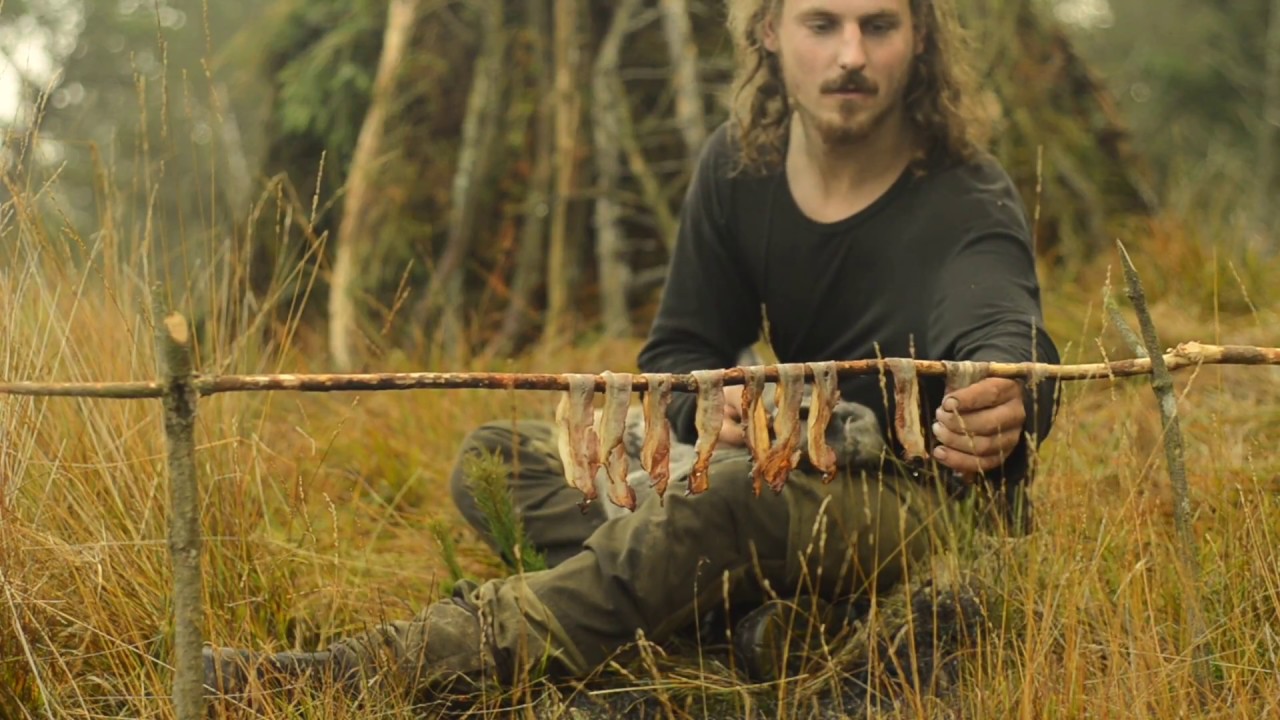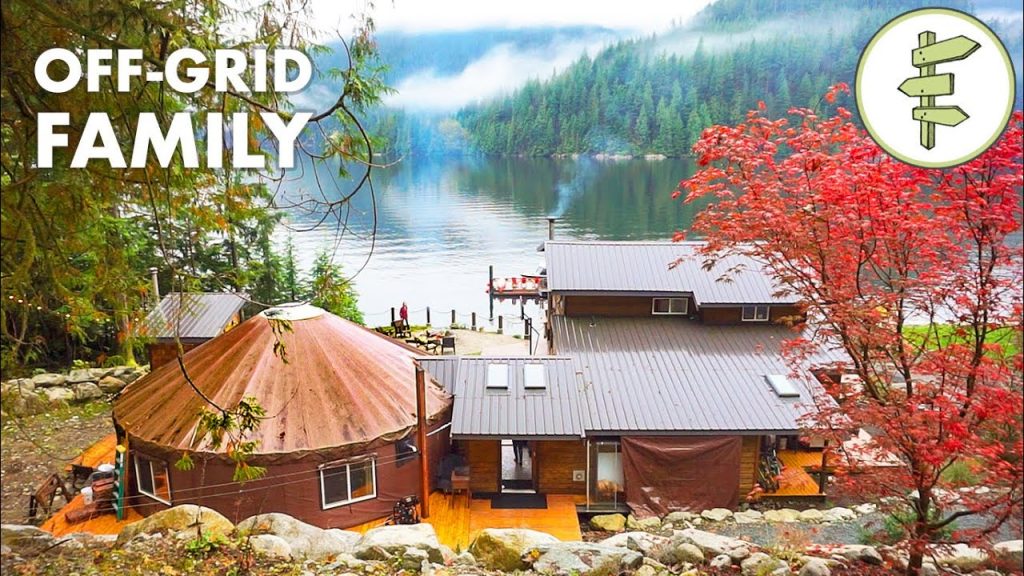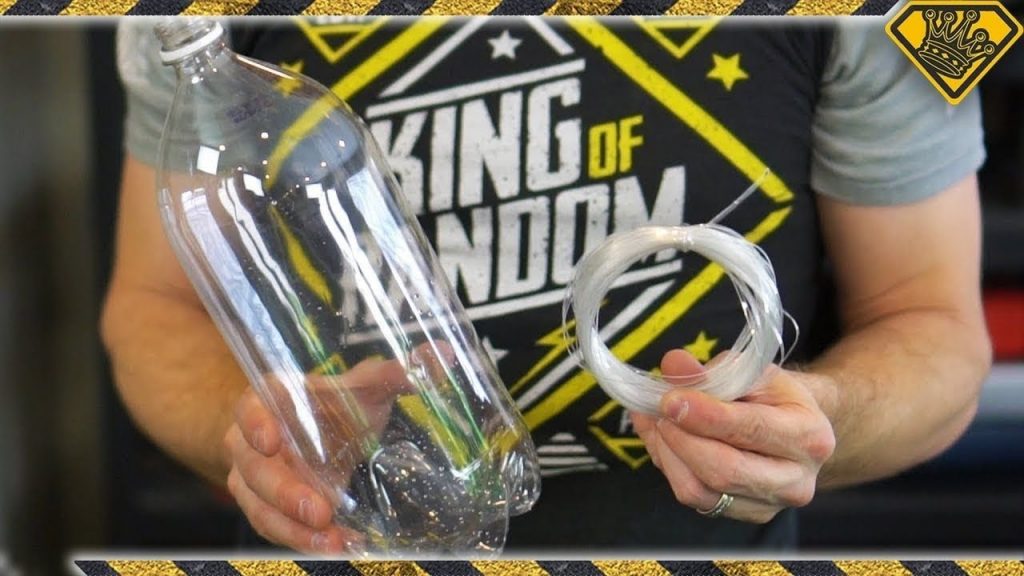Bushcraft overnight – shelter building, fat wood, bacon, russian axe, repairing sweater

Making a survival shelter with indoor fireplace on a solo overnight.
Location: Denmark – previous viking country. West coast of Jutland – sand, big sea, spruce and pine forrest. Some of the most remote in Denmark, but a lot of people in Denmark so limited how remote it can get. A lot of birds and deer. No bears only a few wolves – nothing dangerous for campers.
Consuming: Water. Pig and cow.
Most asked questions:
1. Is it safe to use fire inside the shelter?
Yes. Just keep the fire small and relative spark free. Take more precautions if it is a dry period or add water to the moss making it harder to ignite by mistake. Smoke is not a problem, just don’t stand up inside the shelter.
2. Is the shelter water proof?
No, but well enough to keep dry if it just is short heavy rain or a bit of rain on and off for a few days in a row.
What are the key factors to consider when building a shelter in bushcraft, and how can natural resources be utilized for this purpose?
Bushcraft Overnight: A Comprehensive Guide to Shelter Building, Fire Starting, Axe Handling, and Clothing Repairs
Bushcraft is an outdoor survival skill that has been practiced by humans for thousands of years. It employs a variety of techniques, including shelter building, fire starting, woodcraft, tracking, hunting, and more, with the goal of enabling one to live off the land in the wilderness. In this article, we will explore the basics of bushcraft overnight, including shelter building, fat wood, bacon, Russian axe, and repairing a sweater.
Shelter Building
One of the most important skills in bushcraft is building a shelter. The first step in building a shelter is to choose a suitable location. Look for a dry and flat area that is protected from wind and rain. Once you have found a suitable spot, gather natural materials that can be used to construct your shelter, such as tree branches, leaves, and mud.
There are many types of shelters that can be constructed in bushcraft. A lean-to shelter is one of the easiest to build. It requires two long branches and a crossbar. The long branches are placed at an angle with the crossbar resting on them, creating a roof-like structure. The space below the crossbar can be filled with leaves for insulation.
Fat Wood
Fat wood is a type of wood that is naturally saturated with resin, making it highly flammable. It can be found in coniferous trees such as pine, spruce, and fir. Fat wood can be used as kindling to start a fire because it burns hot and for a long time. It is also useful for making torches, as the resin acts as a natural fuel source.
Bacon
Bacon is a staple in bushcraft cooking. It is high in fat, which provides energy and helps keep you warm. Bacon can be cooked on a stick over an open fire or in a pan. It is also a useful ingredient for seasoning other foods.
Russian Axe
The Russian axe is a versatile tool in bushcraft. It can be used for chopping wood, splitting logs, and carving. Its long handle provides leverage for powerful swings, making it useful for larger logs.
Repairing a Sweater
Bushcraft is as much about repairing clothing as it is about survival. Sweaters are a common item in bushcraft because they are warm and durable. However, they can become damaged over time. A common problem is the formation of holes in the fabric. To repair a hole in a sweater, thread a needle with matching yarn and sew the hole closed with small, closely spaced stitches.
In conclusion, bushcraft overnight requires a variety of skills, including shelter building, fire starting, woodcraft, cooking, and clothing repair. While each of these skills requires practice and patience, they can all be mastered with time and experience. The key is to be resourceful and make use of the natural resources around you. With these skills, you can thrive in even the most challenging wilderness environments.









World’s BIGGEST Flowers!
Solo Survival: How to Survive Alone in the Wilderness for 1 week –Eastern Woodlands
20 Wilderness Survival Tips and Bushcraft Skills
Luxury Eco Bush Retreat w Loft Bed & Lap Pool! – Australian Home Tour
THIS IS THE MOST EXPENSIVE PLANE TICKET IN THE WORLD | Etihad A380 The Residence